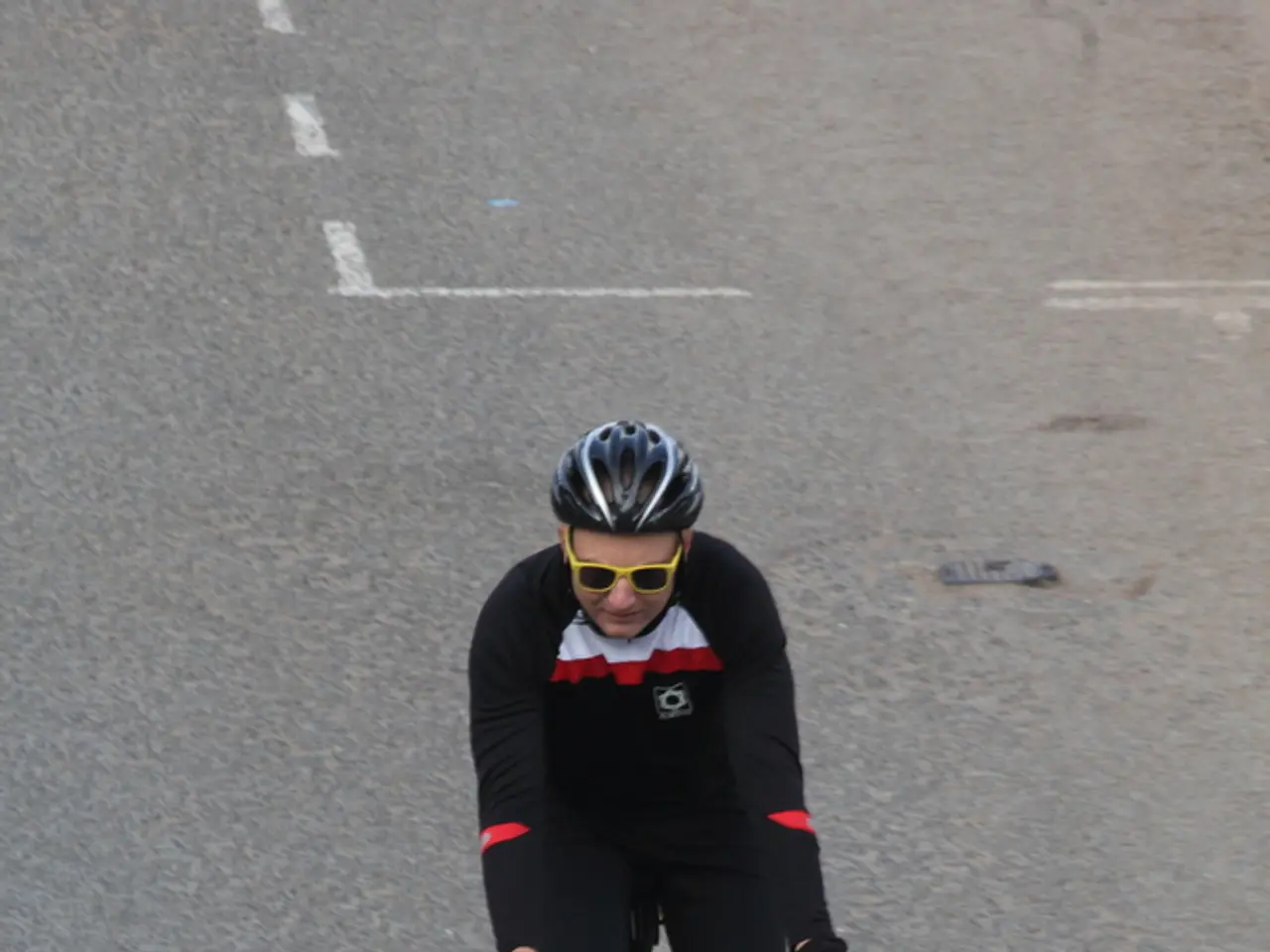Analysis of a bicyclist's physiological reaction and visual focus within commercial vehicle loading areas
In a groundbreaking study conducted by researchers from the Department of Civil and Environmental Engineering at the University of Washington, the impact of commercial vehicle loading and unloading activities on bicycle operations has been evaluated. The study, which involved 48 participants and resulted in 864 observations across 18 experimental scenarios, sheds light on a common issue in urban locations: the obstruction of bicycle lanes by trucks.
The research, designed as a bicycle simulation experiment, explored three independent variables: the sizes of cargo vehicle loading zones (CVLZ), the position of couriers, and the presence of loading accessories. The findings suggest that both the size of the cargo vehicle loading zones and the position of the courier had the greatest effect on bicyclists' physiological responses.
Bicyclists were found to have approximately two peaks-per-minute higher when riding in the condition that included no CVLZ and a courier on the side, compared to the base conditions (Max CVLZ and no courier). This indicates a heightened response from bicyclists when navigating through scenarios that mimicked real-world situations where trucks were parked in inappropriate areas, obstructing the bicycle roadway infrastructure.
When the courier was beside the truck, bicyclist's eye fixation durations were one second greater, suggesting that they were more alert as they passed by the courier. Conversely, the presence of loading accessories had the lowest influence on both bicyclists' physiological response and eye tracking measures.
The study also highlighted the lack of designated loading and unloading zones as a significant problem for bicyclists. Many urban locations lack these zones, forcing trucks to park in areas that obstruct bicycle lanes, causing concern in urban areas. The growth of freight operations is leading to issues with truck parking during loading and unloading, and there is a demand for transportation systems to facilitate these operations without compromising the safety and efficiency of bicycle infrastructure.
The obstruction of bicycle lanes is a common issue in urban locations, and the findings of this study underscore the need to address this issue. As freight operations continue to increase globally, it is crucial to find solutions that ensure the safety and convenience of all road users, including bicyclists. The study provides valuable insights that can help in the development of strategies to improve the coexistence of trucks and bicycles in urban areas.






